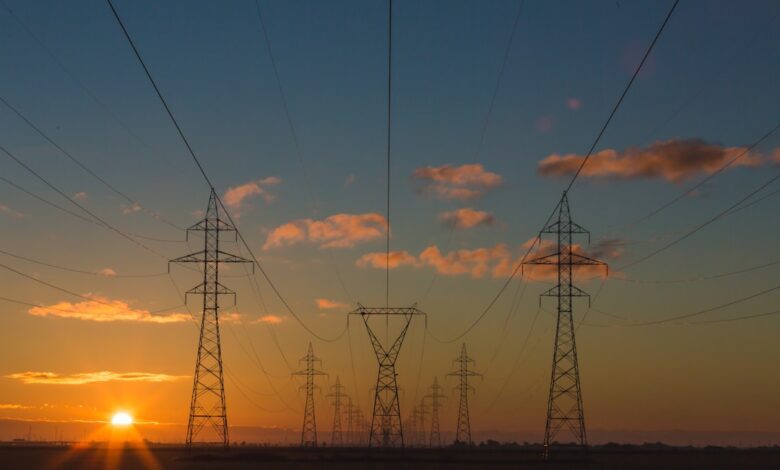Fossil Fuels and the Energy Transition: Navigating Oil, Coal, and Natural Gas in a Sustainable Future

The global energy landscape is undergoing a profound transformation, driven by the urgent need to address climate change and the quest for sustainable energy solutions. Fossil fuels—oil, coal, and natural gas—have long been the backbone of energy production, fueling economies and powering industries. However, as we face the pressing challenges of climate change and the imperative for energy security, the role of these traditional energy sources is being reevaluated. This article delves into the complexities of fossil fuel production and consumption, highlighting their significance in global energy markets while exploring the delicate balance between fossil fuels and renewable energy sources. We will also examine innovative strategies such as carbon capture and smart grids that are reshaping the future of energy efficiency and consumption. Join us on this journey to understand how fossil fuels and emerging technologies can coexist within a sustainable energy transition, paving the way for a greener future that embraces solar power, wind energy, and other renewable solutions.
- 1. "Understanding Fossil Fuels: The Role of Oil, Coal, and Natural Gas in Global Energy Markets"
- 2. "The Energy Transition: Balancing Fossil Fuels with Renewable Energy Sources for a Sustainable Future"
1. "Understanding Fossil Fuels: The Role of Oil, Coal, and Natural Gas in Global Energy Markets"
Fossil fuels, comprising oil, coal, and natural gas, play a pivotal role in global energy markets, accounting for a significant portion of the world's energy consumption. As of 2023, fossil fuels are still the dominant source of energy, despite the growing emphasis on renewable energy and the energy transition towards greener alternatives.
Oil remains a critical component of energy transportation, powering vehicles, ships, and aircraft, while also serving as a vital feedstock for petrochemicals. The global demand for oil continues to influence energy economics, with fluctuations in prices often reflecting geopolitical tensions, energy policy changes, and shifts in energy consumption patterns. Meanwhile, coal, historically the backbone of electricity generation, is gradually being phased out in many developed nations due to its substantial carbon emissions. However, it still plays a crucial role in energy security for emerging economies, where affordable thermal energy is essential for industrial growth.
Natural gas is increasingly viewed as a transitional fuel in the energy landscape. It emits less carbon dioxide than coal when burned, making it a more environmentally friendly option in the short term. Its versatility allows for integration with renewable energy sources, providing energy storage solutions that enhance energy efficiency and grid reliability. The rise of smart grids and energy innovations has facilitated the use of natural gas to complement intermittent sources like solar power and wind energy, paving the way for a more resilient energy infrastructure.
As countries navigate the complexities of energy imports and exports, the global energy trends indicate a shift towards balancing fossil fuel production with investments in renewable energy. Energy investments are being directed towards research and development (R&D) of technologies such as carbon capture to mitigate climate change impacts. Additionally, hydrogen energy has emerged as a potential game-changer in the quest for low-emission energy solutions.
In conclusion, while fossil fuels remain integral to the current global energy landscape, the ongoing energy transition towards renewable energy sources, coupled with innovations in energy storage and efficiency, is reshaping the future of energy consumption and production. The interplay between fossil fuels and renewables, alongside evolving energy policies, will ultimately determine the trajectory of global energy markets in the coming decades.
The production and consumption of fossil fuels—namely oil, coal, and natural gas—remain integral to the global energy landscape, despite the ongoing push towards renewable energy sources. In 2023, fossil fuels accounted for approximately 80% of the world's energy consumption, underscoring their dominance in energy markets (International Energy Agency [IEA], 2023). However, as we navigate the energy transition, there is a growing emphasis on energy efficiency and the adoption of green energy alternatives, such as solar power, wind energy, and hydropower.
The reliance on fossil fuels for thermal energy and transportation has significant implications for energy security and climate change. Countries are increasingly facing pressure to balance their energy imports and exports while investing in energy innovations that promote sustainable practices. For instance, carbon capture technologies are being developed to mitigate the environmental impact of fossil fuel consumption, allowing for continued use while reducing greenhouse gas emissions.
In response to global energy trends, policymakers are focusing on energy policies that support renewable energy integration and the development of smart grids. By enhancing energy storage capabilities and optimizing energy transportation systems, nations can better accommodate the influx of renewable energy sources, such as bioenergy and hydrogen energy. This shift not only fosters energy independence but also stimulates economic growth through energy investment in emerging technologies.
The role of nuclear energy in the energy transition cannot be overlooked; it offers a low-carbon alternative that complements renewable sources. As countries strive to reduce their carbon footprints, the collaborative efforts of fossil fuels and cleaner energy sources will be vital. Moreover, the future of electric vehicles (EVs) heavily relies on the evolution of energy R&D, ensuring that the necessary infrastructure supports a shift away from traditional fossil fuel consumption.
Ultimately, while fossil fuels will continue to play a significant role in energy production, the path towards a sustainable energy future hinges on our ability to innovate and adapt to the changing energy landscape. Embracing distributed energy solutions and prioritizing energy efficiency will be key to achieving a balanced and resilient energy system.
References:
International Energy Agency. (2023). Global Energy Trends. Retrieved from [insert link here].
2. "The Energy Transition: Balancing Fossil Fuels with Renewable Energy Sources for a Sustainable Future"
The energy transition is a critical process that aims to balance the reliance on fossil fuels—such as oil, coal, and natural gas—with the integration of renewable energy sources to create a sustainable future. As global energy trends evolve, countries face the dual challenge of meeting energy demands while addressing climate change. This balancing act requires innovative energy policies that promote energy efficiency and diversify energy markets.
To advance the energy transition, investments in renewable energy technologies, such as solar power and wind energy, are essential. These green energy solutions not only reduce dependence on fossil fuels but also contribute to energy security by decreasing vulnerability to energy imports and exports. Hydropower and bioenergy further enhance the renewable energy portfolio, offering stable energy production and storage capabilities.
Moreover, the incorporation of energy storage systems is vital for managing the intermittent nature of renewable energy sources. Technologies like smart grids facilitate the efficient distribution and management of energy, ultimately optimizing energy transportation and enhancing overall energy economics.
Nuclear energy also plays a key role in the energy transition, providing a low-carbon alternative that can bridge the gap as fossil fuel dependency declines. With advancements in energy R&D, including carbon capture technologies and hydrogen energy development, the transition to a cleaner energy landscape becomes more feasible.
As electric vehicles gain popularity, their integration into the energy system requires innovative approaches to energy storage and distribution. This shift towards distributed energy solutions fosters a more resilient and sustainable energy infrastructure. As we navigate the complexities of the energy transition, balancing fossil fuels with renewable energy sources is not merely an environmental imperative but also a pathway towards energy innovations that can drive economic growth while safeguarding our planet for future generations.
In conclusion, the energy transition represents a transformative journey that necessitates collaboration across various sectors, aligning energy policy with environmental goals, and paving the way for a sustainable and secure energy future.
In conclusion, the intricate landscape of fossil fuels—comprising oil, coal, and natural gas—plays a pivotal role in today’s energy markets. Understanding their impact is crucial as we navigate the ongoing energy transition towards a more sustainable future. While fossil fuels remain significant contributors to global energy consumption, the shift towards renewable energy sources like solar power, wind energy, and hydropower is essential to combat climate change and enhance energy security. As we embrace innovations such as carbon capture, smart grids, and energy storage technologies, we can maximize energy efficiency and minimize our reliance on traditional energy sources.
The collaboration between fossil fuel production and renewable energy adoption will be vital in shaping effective energy policy and ensuring a balanced approach to energy economics. As countries invest in offshore energy and explore hydrogen energy solutions, we must prioritize energy investments that align with global energy trends and foster a sustainable energy future. By integrating distributed energy systems and promoting electric vehicles, we can enhance energy transportation and support the development of a greener energy landscape.
Ultimately, the energy transition is not just about reducing fossil fuel usage; it's about creating a synergistic relationship between all energy forms, including nuclear energy and bioenergy. The path forward requires a collective commitment to energy R&D and a keen focus on energy exports and imports that align with our climate goals. As we move forward, let us harness the potential of both fossil fuels and renewable energy to build a resilient and sustainable energy framework for generations to come.
—
*Meta Description: Explore the transition from fossil fuels to renewable energy sources, understanding the balance needed for a sustainable future in energy markets.*





